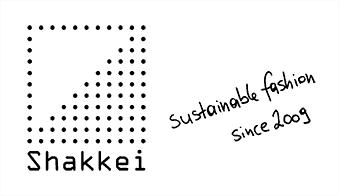Information
Green IT
This website is hosted on an energy-efficient CO2-neutral web server.
Adresse + Kontakt
Shakkei
Burggasse 43-45/Top 17
Ecke Kirchengasse
1070 Wien
Tel. +43 699 102 32 116
studio@shakkei.at
Adress + Contact
Shakkei
Burggasse 43-45/Top 17
Corner to Kirchengasse
1070 Vienna
Tel. +43 699 102 32 116
studio@shakkei.at
Öffnungszeiten
Montag – Freitag 11:00 – 18:00 Uhr
Samstag 11:00 – 16:00 Uhr
Opening Hours
Monday – Thursday 11:00 – 18:00
Friday 11:00 – 19:00
Saturday 11:00 – 18:00

AI and new technologies in fashion – a fast-paced trend or the only realistic future?
News-ENNo matter where you look, no matter what magazine you open, no matter what blog post you read, or whether you just scroll through social media for the sheer pleasure of it – there seems to be only one topic on everybody’s mind: artificial intelligence.
Many labels are currently experimenting with AI applications such as Midjourney or Dall-E. These image-generating applications seem to be the new must-have of the season, especially for fashion designers. Especially in the area of design creation, quick and completely unexpected design results that you may not have thought of before, suddenly emerge.
As a curious and forward-thinking designer, I have of course decided to dabble in this topic. What seems particularly important to me, in addition to the pure production of new ideas, is the fact that AI can also generate photos that could potentially replace photo shootings with new collections for the label. Photo shoots are often a big challenge, not only in terms of personnel but also financially. Models have to be cast and booked, a photographer has to be commissioned, hair and make-up specialists have to be found, and sometimes it also makes sense to bring in a stylist. All in all, a whole handful of professionals, who should not only all have time on the same day, but also have to be paid.
So I bravely tried out an AI. I dragged images photographed on a mannequin into the tool to generate models on a catwalk. The results sometimes still seem a bit wooden, for the lack of a better term, but I’m sure we’ll be able to achieve very exciting and much more realistic images in the future.
So will strenuous and expensive photo shoots soon be a thing of the past?
AI can be a good way to achieve a professional appearance with low cost. I see a lot of potential for young and small labels that don’t have large budgets. These tools won’t replace the organic nature of a real photo any time soon. In addition, you leave a lot of creative freedom to a program in which you can only intervene to a limited extent.
At this point I must also make it clear that the photos posted here, were subsequently edited using graphics programs to improve the result.
What is your opinion? Will AI become the new standard in fashion and soon completely replace classic photo shoots?
Shakkei Performance at the Design Store
News-ENOn April 24, 2023, a performance entitled “Time out with Haiku” took place at the Shakkei Designstore.
What is a haiku?
A haiku is a Japanese short form poem. It always consists of 3 lines, with 5, 7 and 5 syllables. It is about describing a mood, a feeling or a phenomenon from nature. All haikus read during the performance were written by Gabriel Baradee. We would be happy to send you your favorite haiku.
fabric Sales 2021
News-ENstoffsales